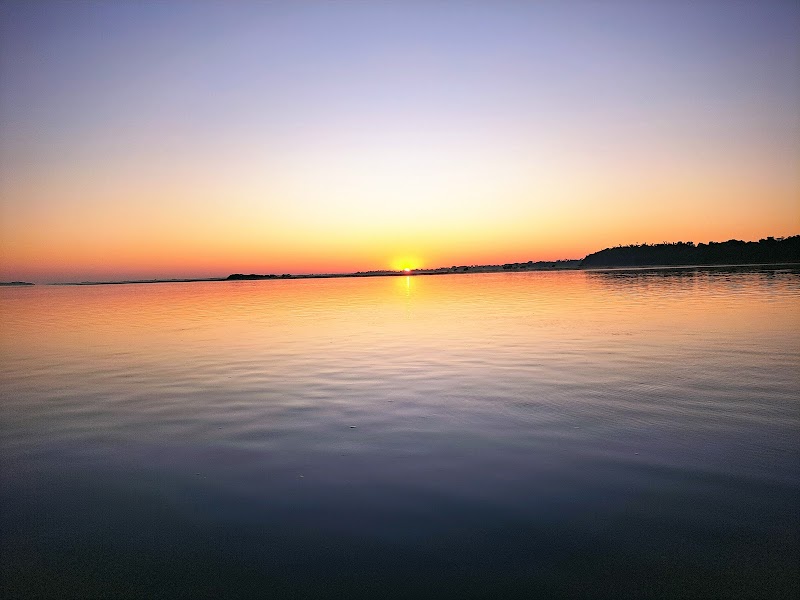
Galloping Through Tradition: The Festival de Cavalhadas in Sidrolândia, Mato Grosso do Sul
Experience the vibrant Festival de Cavalhadas in Sidrolândia, a compelling local celebration where horses and riders bring history to life through dramatic battles and traditional pageantry. Discover practical tips to navigate the festival, connect with regional culture, and capture the power and precision of this unique horse festival.
Wear Robust Footwear
The festival grounds consist of packed earth and can be uneven, so closed-toe shoes or boots will protect your feet and improve mobility around the area.
Arrive Early for Prime Views
To secure a good vantage point near the arena and avoid the heat, plan to arrive before the midday events begin.
Stay Hydrated
With limited shade and high daytime temperatures, carry a refillable water bottle to maintain hydration throughout your visit.
Bring a Light Hat and Sun Protection
Sun exposure can be intense. A wide-brimmed hat and sunscreen will shield skin without adding bulk to your festival gear.
Galloping Through Tradition: The Festival de Cavalhadas in Sidrolândia, Mato Grosso do Sul
Every year in Sidrolândia, a small city in Mato Grosso do Sul, the Festival de Cavalhadas charges into life with a burst of vibrant colors, pounding hooves, and dramatic reenactments that honor Brazil’s colonial horse culture. This traditional festival, rooted in historical pageantry, showcases horseback riders clad in medieval-inspired costumes who stage mock battles depicting the clash between Moors and Christians. Here, horse and rider move as one, each step across the dusty arena a testament to skill, history, and local pride.
Sidrolândia’s open-air festival grounds pulse with energy as the cavalcade rearranges time. Expect horses that challenge the limits of control, their manes catching the sun, hooves kicking earth that dares to fly. The festival runs over several days, usually in June, providing an immersive way to connect with the region’s equestrian roots and lively cultural identity.
Practical insights are vital to making the most of this lively event. The festival occurs outdoors on packed soil with minimal shade, so sturdy, closed-toe footwear is recommended to navigate the uneven ground comfortably. Arriving early is a strategic move—morning air is cooler, and you’ll secure a position closer to the action. Bring a refillable water bottle; the dry heat tests endurance and staying hydrated sharpens focus.
The spectacle goes beyond just watching. Local vendors sell traditional food and crafts, turning the festival into a partial open-air market where culture and community intertwine. There’s the clatter of spurs, the rhythmic chants, and the occasional neigh that seems to echo ancient stories through the air. For photographers, the shifting light from morning to late afternoon offers dramatic contrasts to capture riders’ determination paired with horses’ raw power.
Transportation to Sidrolândia is most convenient via Campo Grande, the state capital just 70 km away, where accommodations cater to a variety of budgets. Planning your visit around the festival means booking early, as lodging fills fast when the community and visitors unite for this named event.
The Festival de Cavalhadas is no passive celebration; it demands respect from all participants—including the visitors—for the horses’ fierce spirit and the riders’ honed skills. It’s an active engagement with an event fiercely itself, blending history, culture, and the natural rhythms of the South Brazilian plains.
Nearby Trips
All Adventures
Boat Charters
Water Activities
Adventures near Sidrolândia, Mato Grosso do Sul
Discover the unique and memorable adventures that make Sidrolândia, Mato Grosso do Sul special.
Frequently Asked Questions
What is the historical significance of the Festival de Cavalhadas?
The festival reenacts medieval battles between Moors and Christians, symbolizing the cultural clash and heritage brought to Brazil by Portuguese colonizers, with a particular emphasis on equestrian traditions that shaped local identities.
Are the horses trained specially for the festival?
Yes, horses undergo rigorous training to handle the noise, crowd, and choreography of the mock battles, ensuring that both animal and rider can safely and skillfully participate.
What should visitors expect in terms of crowd size and amenities?
The festival attracts a mix of locals and tourists, creating lively but manageable crowds. Amenities like local food vendors, rest areas, and portable facilities are available but limited, so plan accordingly.
Is the festival family-friendly?
Yes, the event is suitable for all ages, offering engaging cultural experiences and visual spectacles, though supervision near the horses is advised for children.
Can visitors interact with riders or horses?
Direct interaction is generally restricted for safety, but there are designated areas and moments where spectators can meet riders and learn about their craft.
How accessible is the festival for international travelers?
Access is straightforward via Campo Grande’s airport and road networks. English may be limited, so basic Portuguese or a translation app helps when communicating locally.
Recommended Gear
Closed-Toe Comfortable Shoes
Protects feet from dirt and uneven terrain during the festival.
Refillable Water Bottle
Maintains hydration under the hot Mato Grosso do Sul sun.
Wide-Brim Hat
Provides sun protection during long hours outdoors.
Camera with Zoom Lens
Captures the vibrant action and detailed costumes from a distance.
Local Insights
Hidden Gems
- "Poxoréu Hill offers panoramic views of the city and festival grounds from above, perfect for a quieter, contemplative perspective away from the crowds."
- "The nearby Araguaia River gently beckons travelers with calm waters and scenic spots for a quiet rest after festival days."
Wildlife
- "Watch for capybaras along water edges and a variety of vibrant bird species such as toucans and aracaris that patrol the festival outskirts."
History
"Sidrolândia’s Festival de Cavalhadas preserves early colonial heritage through performance, linking contemporary culture to historic equestrian traditions that shaped Mato Grosso do Sul’s rural identity."
